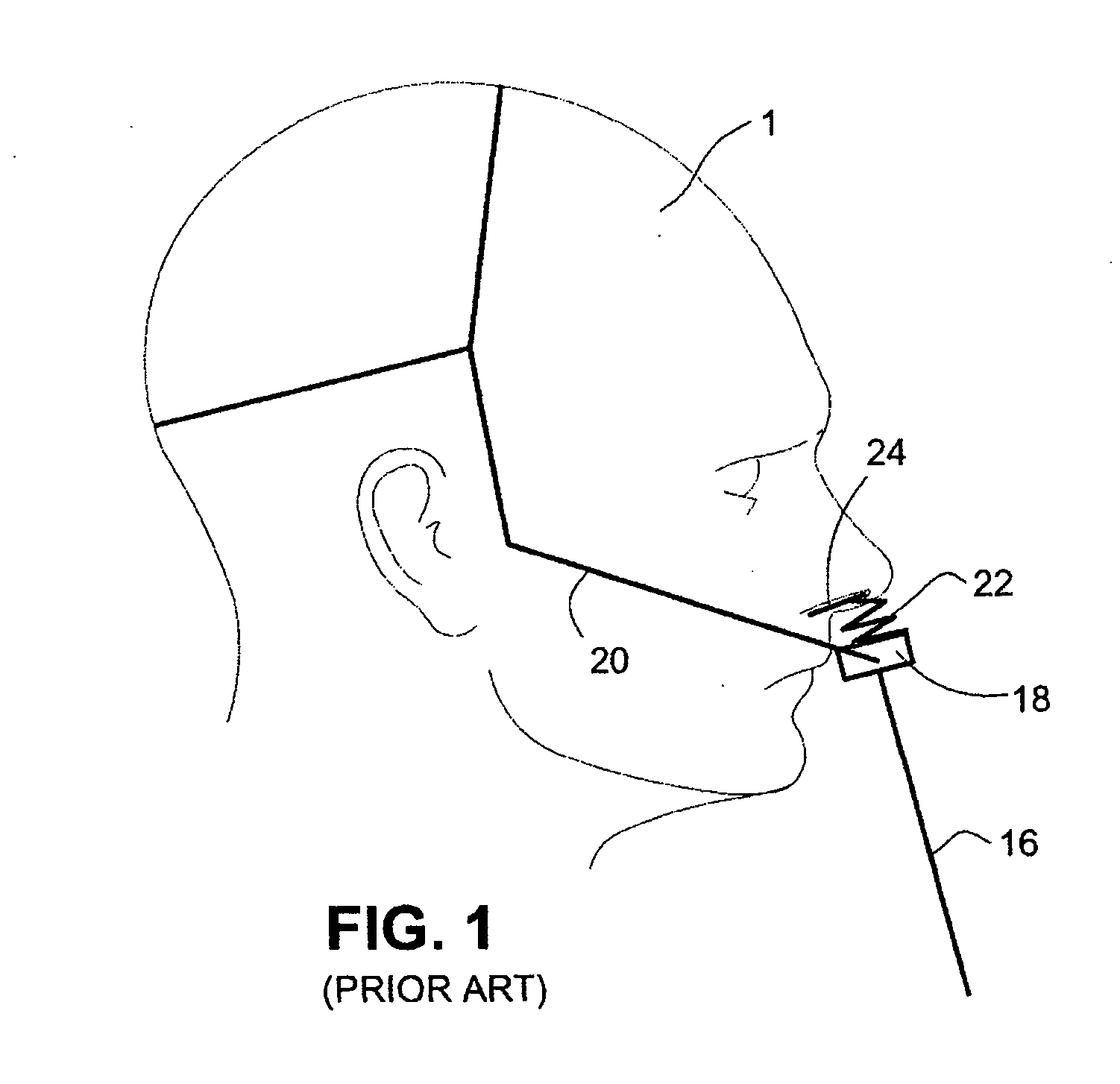Patient interface systems
a patient interface and interface technology, applied in the field of patient interfaces, can solve the problems of health risks, lack of stability, and improvement or decrease of comfort or effectiveness, and achieve the effect of improving manufacturability and improving ease of us
- Summary
- Abstract
- Description
- Claims
- Application Information
AI Technical Summary
Benefits of technology
Problems solved by technology
Method used
Image
Examples
first embodiment
3.2.4.1 Patient Interface Structure Including Linking Element—First Embodiment
[0158]Referring to FIGS. 8a and 8b, a patient interface structure according 32 according to another sample embodiment may comprise a seal 2 comprising a nozzle assembly 3 having nasal pillows 4. The patient interface structure 32 may include an optional linking portion or element 47 configured to link tension forces applied by the seal positioning and stabilizing structure from one side of the patient interface structure 32 to the other side in order to isolate forces applied by the seal positioning and stabilizing structure at the top portion 6t of the flexible base 6, and thereby isolate tube drag forces at the lower portion 6l of the flexible base 6 of the patient interface structure 32. By isolating forces in such a way, the sealing zones 8a of the nasal pillows 4 of the seal 2 are stabilized against the patient's nares in use. In some forms of the technology, there may be no physical linking element. ...
second embodiment
3.2.4.2 Patient Interface Structure Including Linking Element—Second Embodiment
[0164]As shown in the sample embodiment of the patient interface structure shown in FIG. 8a, the linking element 47 may extend across the entire top portion 6t of the flexible base 6, from connector 50 to connector 50, and including the entire width. See, for example, W1 in FIG. 17a. According to another sample embodiment of the patient interface structure 32 shown in FIG. 8c, the linking element 47 may extend over a section, or sections, of the top portion 6t of the flexible base 6, for example only the section of the top portion 6t between the nasal pillows 4. The linking element 47 may cover a fraction of the width of the top portion 6t, for example half the width. The tension linking element 47 may cover a section, or sections, of the top portion 6t as long as it is sufficient to isolate the forces as described above.
third embodiment
3.2.4.3 Patient Interface Structure Including Linking Element—Third Embodiment
[0165]Referring to FIG. 8d, the linking element may be formed as a series of ridges 47a. The number of ridges 47a may be determined in order to sufficiently isolate forces as described above. As shown in FIG. 8d, the ridges 47a may be provided to the top portion 6t only between the nasal pillows 4. The ridges 47a may be thicker than the top portion 6t. The ridges 47a may be generally circular or rectangular or any other shape. The ridges 47a may extend upwards and / or downwards from the top portion 6t. The ridges 47a may also be formed from a material of higher hardness than that used to form top portion 6t, for example higher durometer silicone, or metal. The ridges 47a may be formed in one piece with the patient interface structure 32, or may be retrofitted to the patient interface structure 32. For example, the linking element, e.g. the ridges 47a, may be adhesively attached to the patient interface stru...
PUM
| Property | Measurement | Unit |
|---|---|---|
| thickness | aaaaa | aaaaa |
| radius | aaaaa | aaaaa |
| angle | aaaaa | aaaaa |
Abstract
Description
Claims
Application Information
 Login to View More
Login to View More - R&D
- Intellectual Property
- Life Sciences
- Materials
- Tech Scout
- Unparalleled Data Quality
- Higher Quality Content
- 60% Fewer Hallucinations
Browse by: Latest US Patents, China's latest patents, Technical Efficacy Thesaurus, Application Domain, Technology Topic, Popular Technical Reports.
© 2025 PatSnap. All rights reserved.Legal|Privacy policy|Modern Slavery Act Transparency Statement|Sitemap|About US| Contact US: help@patsnap.com



